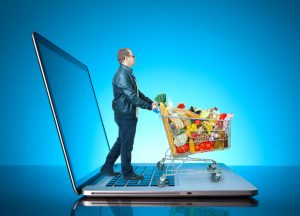How the Internet of Food Is Driving Food Marketing
The buzzword, the Internet of Food, is nowhere near as ubiquitous and overused as the Internet of Things. In short, it connotes the complete food tech ecosystem – food delivery and distribution services, supply chain analytics, and more – and how all of these elements are quickly become intertwined.
Mandy Saven, who heads up food, beverage and hospitality at research and advisory firm Stylus, told FoodNavigator last year that technology and digital media are greatly influencing the appearance, experience and taste of food.
And marketers are taking notice. A number of supermarkets, for instance, are promoting what Saven calls ‘wonky’ vegetables, or ‘cosmetically challenged produce.’
“Maybe this will make consumers more comfortable; there’s a sense of gratification that they are using foods closer to how they are in nature,” said Saven.
Meanwhile, tech and food companies are embracing high-tech marketing innovations to move food products and simultaneously do a bit of brand promoting.
Some examples:
Patron used virtual reality (VR) headsets to market its tequila. The promo was called ‘The Art of Patron Virtual Reality Experience.’ GoPro cameras were used to give consumers a bird’s eye view of the Patron distillery in Jalisco, Mexico. Since consumers are demanding to know more about what’s in their food, where it came from, how it was produced, using VR helps to bring the experience directly to them – without having get up off the couch.
“Increasingly, consumers want to know the origin and backstories of the products they consume,” said Lee Applbaum, Patron’s global CMO. “For us, VR was the ideal way to bring people inside our doors at scale.”
The Wall Street Journal reported that companies large and small are rushing to meet this demand. Kellogg Co. and General Mills advertise online the names and profiles of farmers who grow oats and wheat for their cereals.
At Sam’s Club, codes are now available on produce packages so shoppers armed with a smartphone can scan and glean who grew the food, where it’s from, and how it was grown.
And Campbell’s has a new website, whatsinmyfood.com that the Journal says is being used “to cultivate a home grown image by detailing, for instance, that SpaghettiOs canned pasta is made with tomatoes mainly from California family farms and cheese that is mostly from Wisconsin.”
On the tech side, food marketers are paying close attention to what food tech companies are rolling out, everything from farming analytics to web platforms connecting consumers with farmers they purchase food from. And these food and beverage startups, according to Dow Jones VentureSource, have raised over $2 billion in less than two years.
One company, for instance, is Tastemade, which describes itself as ‘a video network for the mobile generation.’ The company claims to reach over 88 million people each month. ‘Tastemakers’ report on an extensive array of unique topics from vegan cooking to Southern BBQ; the site offers up a welter of market intel on food trends.
Another is ipiit. The company’s Food Ambassador app has a database of more than 280,000 food products. Once you set up your preferences (organic, gluten-free, etc.), the app then helps you avoid certain ingredients. You scan the barcode of a given product and check what you want to steer clear of; the app also provides alternative products that fit your parameters.

Going forward, the smartest thing in your Internet-enabled fridge may not be the unit, but the food itself. And all of this will have a profound impact on food marketing. Bon appetit!
Comments